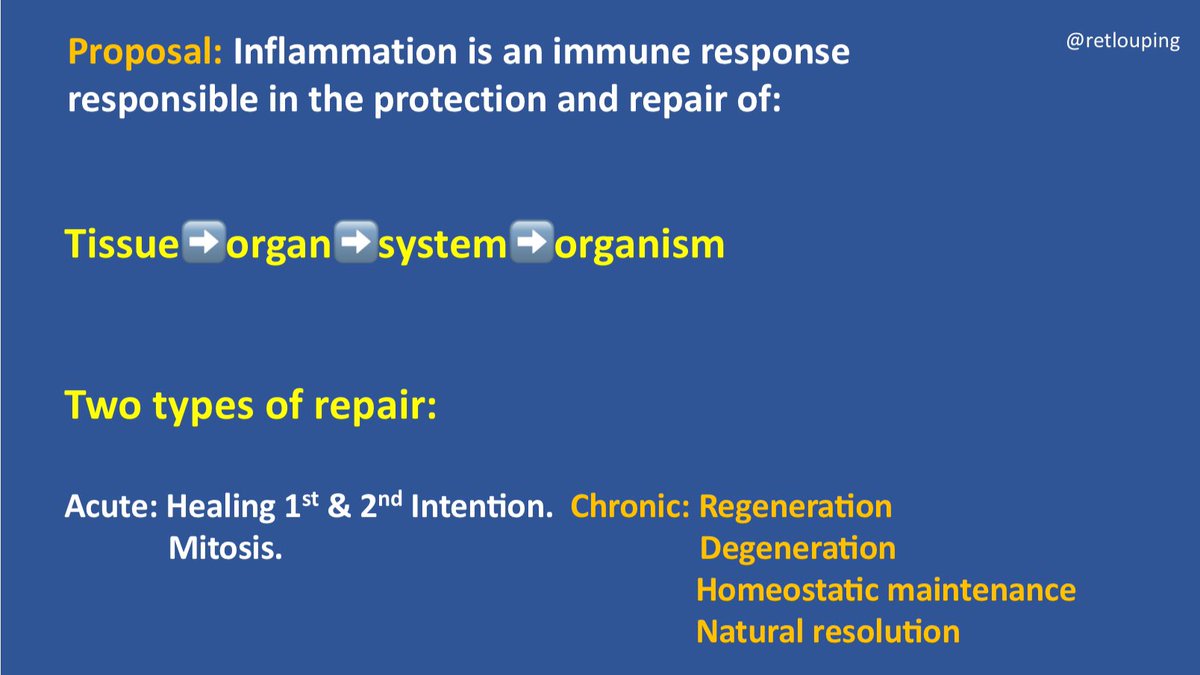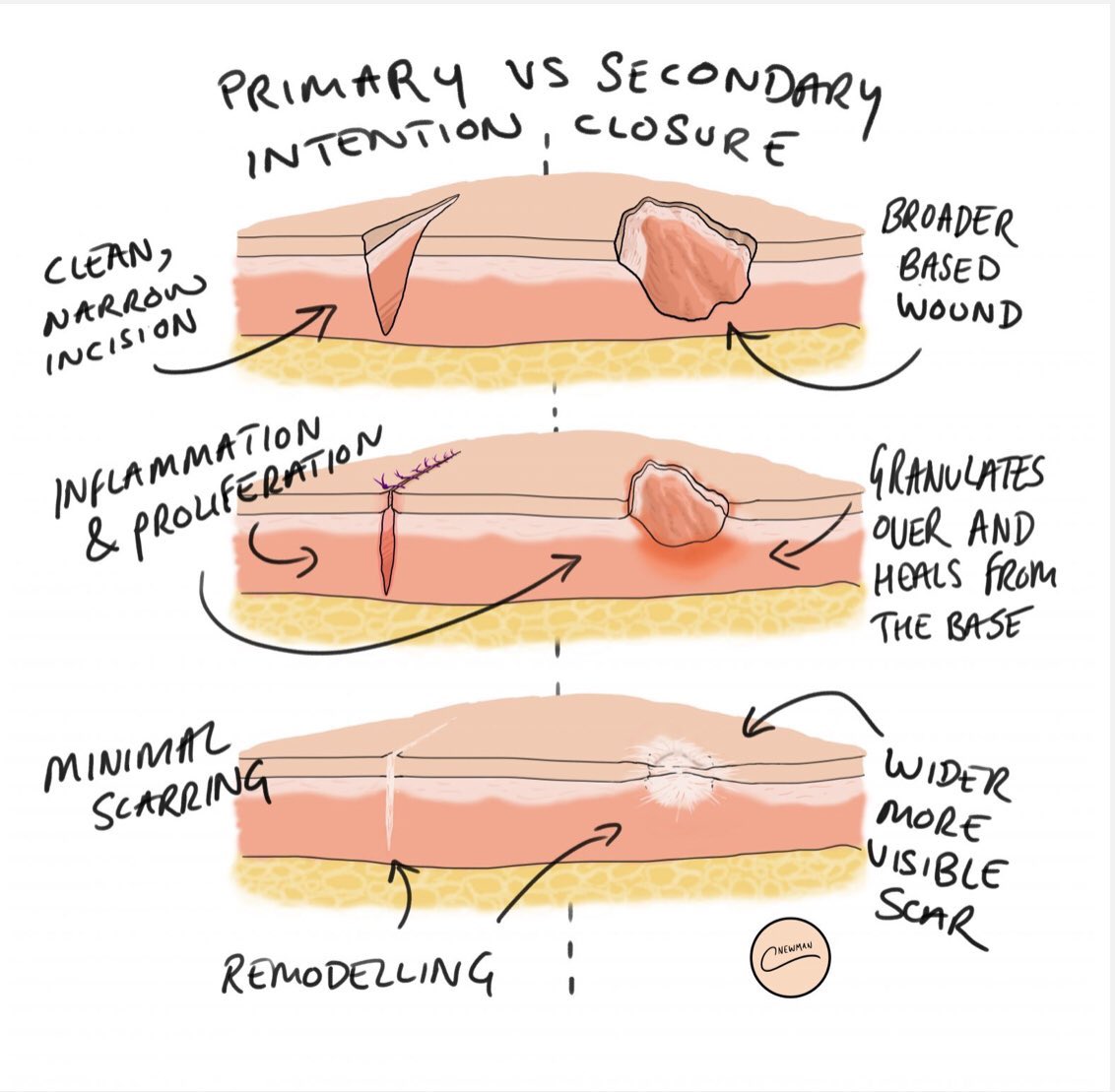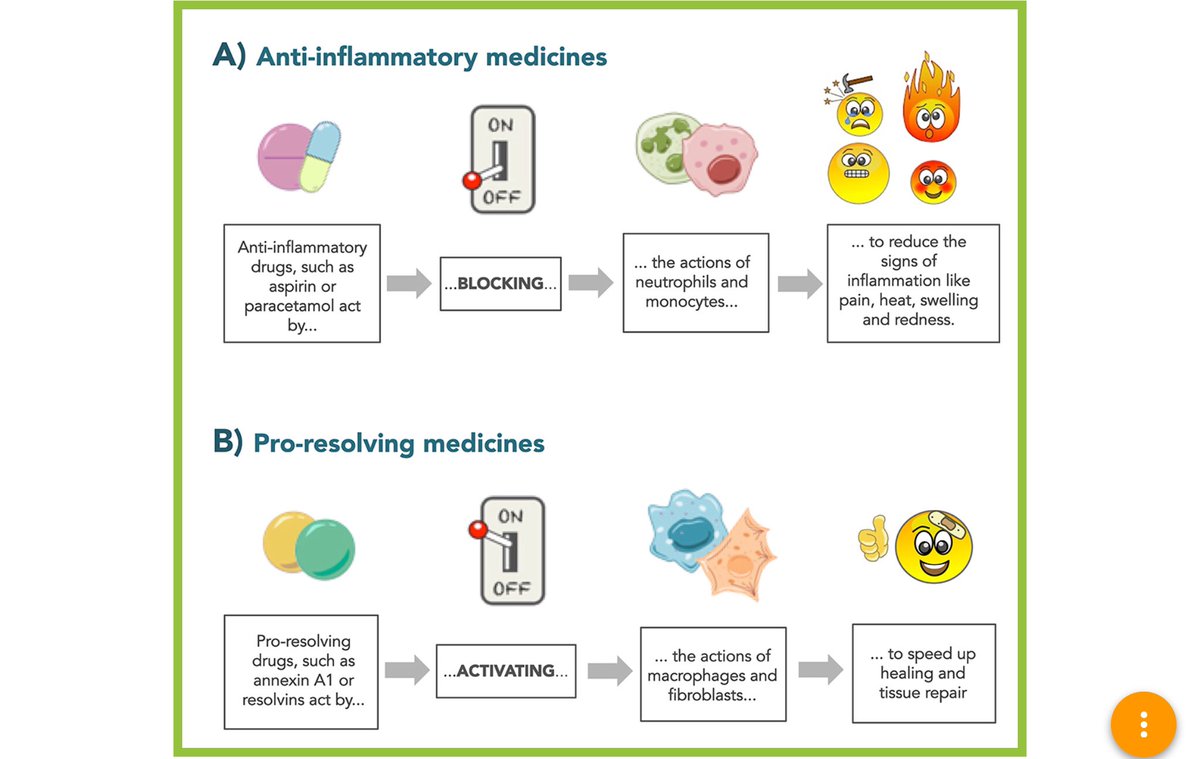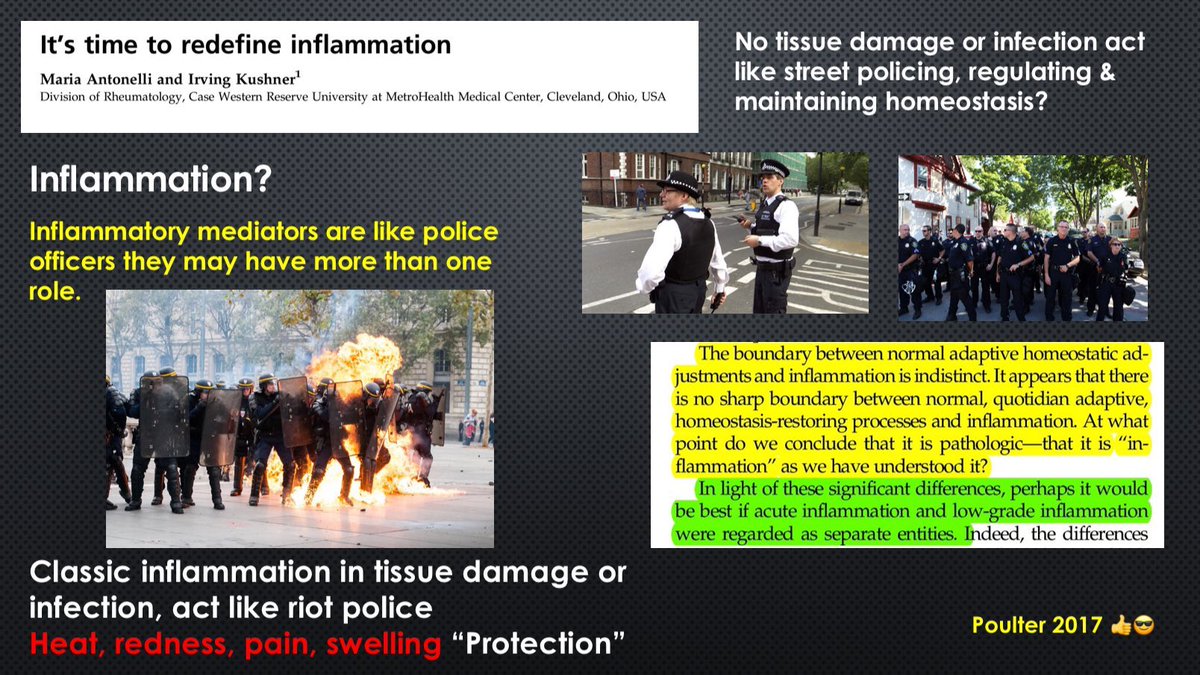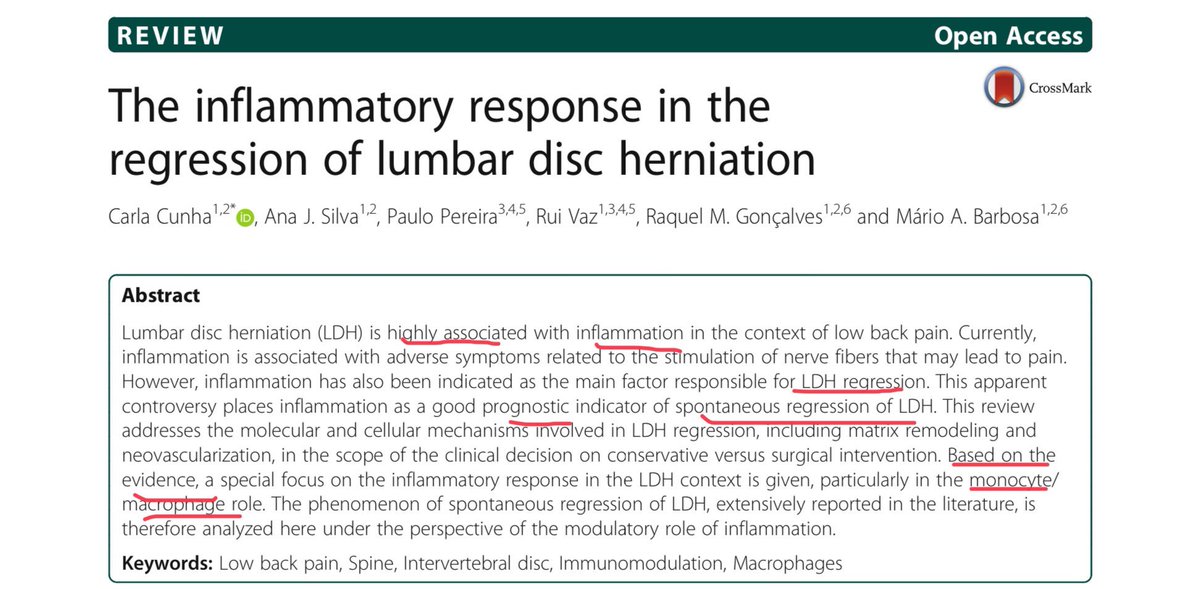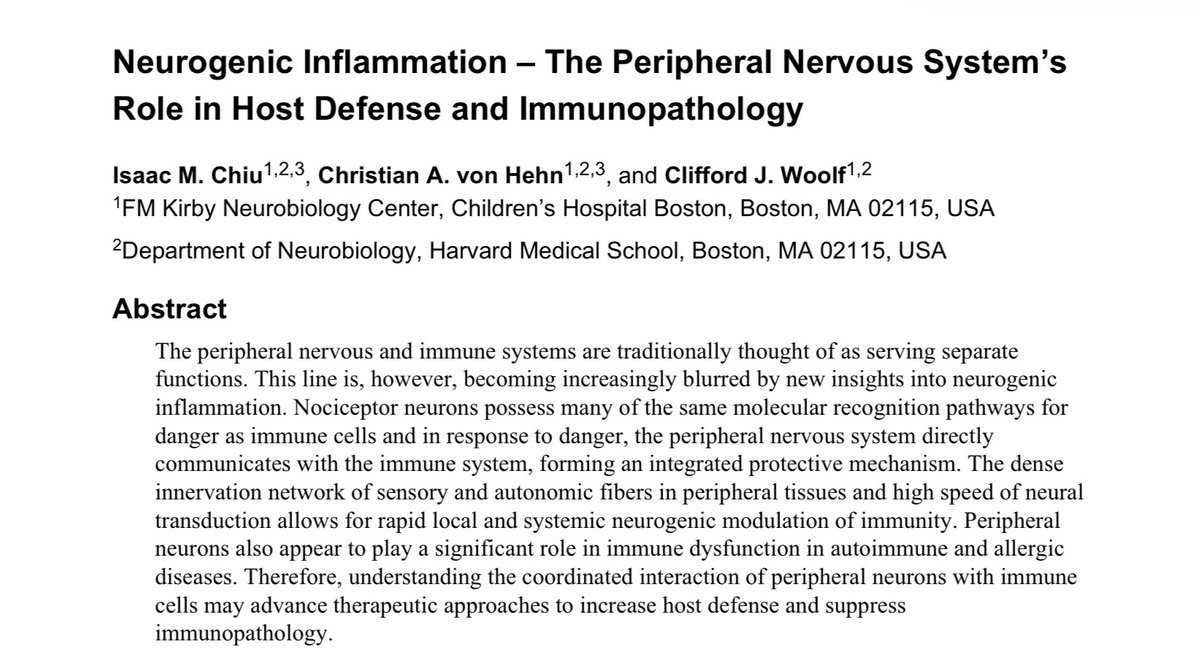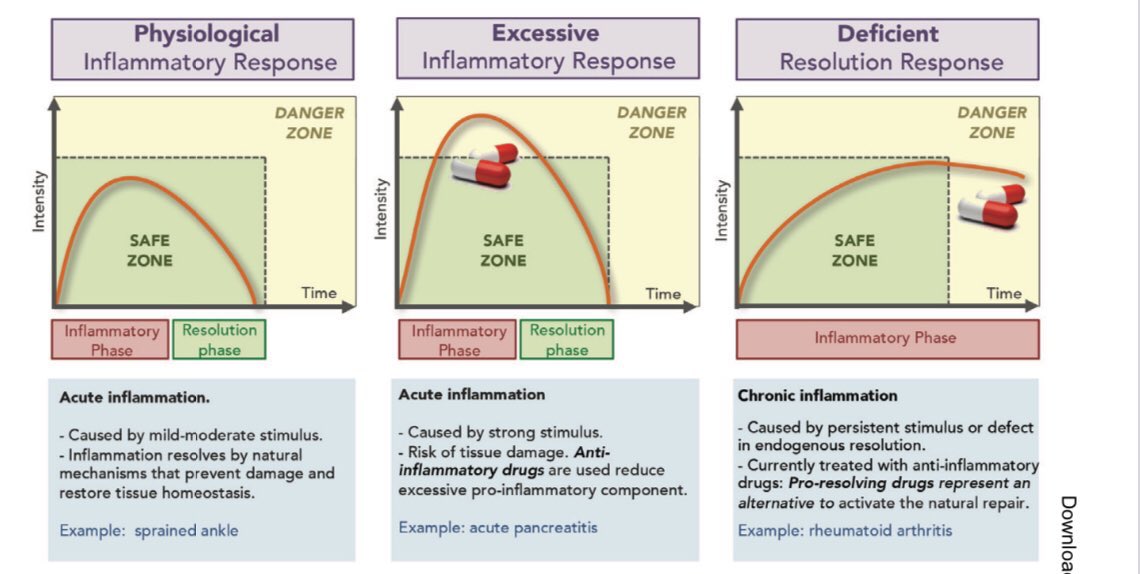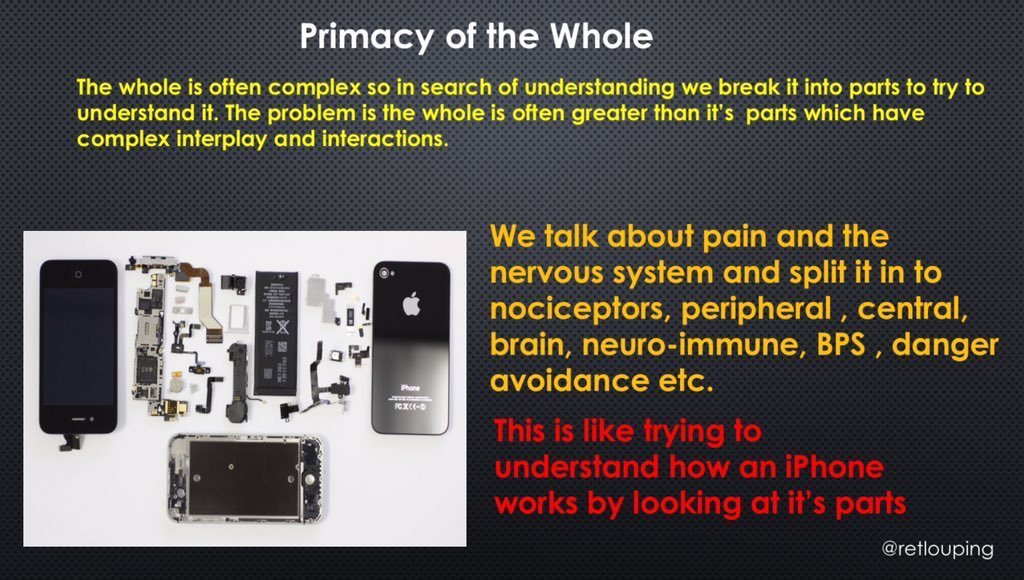After some discussions over the last few days I have been pondering on inflammation, healing and repair. I am going to do a short tweetorial on my last 48 hours learning on inflammation and my interpretation. “Old man shouting at inflammation?”
Join me on the journey
Join me on the journey
Proposal “inflammation” is an immune response responsible in the processes of protection & repair. I am going to propose a new definition of “repair” and suggest it is either acute or chronic.
Our immune system uses inflammation acutely & chronically for different roles & goals.
Our immune system uses inflammation acutely & chronically for different roles & goals.
Inflammation is involved in protection and repair of the tissue, the organ, the bodies systems and globally the organism itself.
Most people are aware of the acute response of inflammation, it is the first stage of healing, it occurs in infection both bacterial and viral.
Most people are aware of the acute response of inflammation, it is the first stage of healing, it occurs in infection both bacterial and viral.
This is the classical inflammatory response and has the four classic signs and symptoms of heat, redness, pain and swelling.
These four occur both in tissue damage, infection and or disease.
The primary function is well discussed in the paper here https://kids.frontiersin.org/article/10.3389/frym.2018.00051">https://kids.frontiersin.org/article/1...
These four occur both in tissue damage, infection and or disease.
The primary function is well discussed in the paper here https://kids.frontiersin.org/article/10.3389/frym.2018.00051">https://kids.frontiersin.org/article/1...
The acute inflammatory initial stages are often known but many people forget that inflammation response if more about protection initially ie like calling 911 the SWAT team, Police, ambulance and Fire truck arrive, this is to ward of invaders and clean the area and make sure...
It is safe for repair and building to commence. What we forget is that the other team that arrives just after are the clearance crew, they will clear all the dead and dying tissue from the area or the dead invaders. This is the macrophagic and phagocytes in action.
This is the resolution phase of inflammation and becomes important when we talk about chronic inflammation.
The acute repair response is highly protective as there is commonly a threat of infection if skin is breached or a bacteria or virus are the cause as in COVID-19.
The acute repair response is highly protective as there is commonly a threat of infection if skin is breached or a bacteria or virus are the cause as in COVID-19.
So what is the chronic repair response? I have highlighted and proposed this isn the past. “Chronic inflammation” has become a common term in recent years, rather than having the cardinal four signs and symptoms of acute inflammation it is generally described at a lower level.
I will propose that rather having a prime focus on protecting the tissue, organ, system or organism it is involved in the reparative process and maintenance of homeostasis.
See here in this paper https://www.fasebj.org/doi/pdf/10.1096/fj.201601326r">https://www.fasebj.org/doi/pdf/1...
See here in this paper https://www.fasebj.org/doi/pdf/10.1096/fj.201601326r">https://www.fasebj.org/doi/pdf/1...
This proposal may explain the difference of acute inflammation and what I will them chronic inflammation in conditions like tendinopathy, diabetes, Alzheimer’s and heart disease. The presence of proinflammatory mediator cells has more to do with resolving the state of the tissue
To try to restore homeostasis. In tendinopathy the matrix of tendons core has been suggested to be degenerative with cellular apoptosis and leaching of proteoglycan. The chronic inflammatory response is trying to “resolve” not heal per se.
Maybe we should be focusing on “pro-resolving” therapies rather than trying to produce an acute inflammatory response where only a chronic one existed with a different goals
This is why we should avoid therapies that aim to produce acute inflammatory responses in tendinopathy.
This is why we should avoid therapies that aim to produce acute inflammatory responses in tendinopathy.
This is why I proposed that the resolution of disc herniation, extrusions and sequestration’s over time is NOT HEALING, it is part of the “chronic repair” process, more to do with resolution than healing. https://arthritis-research.biomedcentral.com/track/pdf/10.1186/s13075-018-1743-4">https://arthritis-research.biomedcentral.com/track/pdf...
It is also important to remember that inflammation as an immune response goes hand in hand with sensitization of the nervous system and thus leads to protective nociception and often pain.
See here https://www.ncbi.nlm.nih.gov/pmc/articles/PMC3520068/pdf/nihms379003.pdf">https://www.ncbi.nlm.nih.gov/pmc/artic...
See here https://www.ncbi.nlm.nih.gov/pmc/articles/PMC3520068/pdf/nihms379003.pdf">https://www.ncbi.nlm.nih.gov/pmc/artic...
Inflammation has a meaning specific to what you first learnt it was, that messsage seems to linger even in the presence of new information and understanding. This short and well written paper outlines what I have proposed https://portlandpress.com/biochemist/article/39/4/4/485/Resolution-in-an-over-inflamed-era">https://portlandpress.com/biochemis...
I propose understanding how inflammation differed in acute repair v chronic repair will allow a better understanding of clinical presentations, proposed treatments management and interventions. We treat the whole person not bits. Trying to understand how and why inflammatory
Reactions occur in the organism is important. Next time someone asks is there inflammation in tendinopathy, you may answer “yes, but probably not the type you learnt at school?”
Thanks for reading these are developing thoughts.
Back to shouting at the clouds.
Thanks for reading these are developing thoughts.
Back to shouting at the clouds.
@threadreaderapp unroll thanks

 Read on Twitter
Read on Twitter